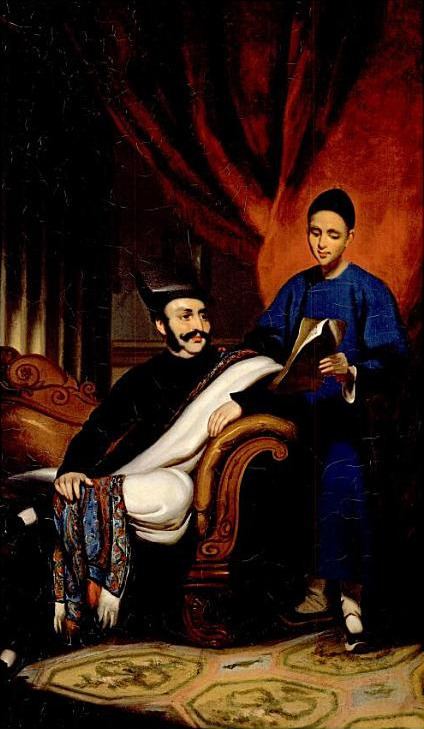Established 1910 Phone 022 2262 1652 | Website Official Website Founded 1910 | |
 | ||
Location Mumbai, Maharashtra, India Address 78/3,, 78/3, Dr DN Rd, Dhobi Talao, Chhatrapati Shivaji Terminus Area, Fort, Mumbai, Maharashtra 400001 Notable alumni Nana Patekar, Arun Kolatkar, Raj Thackeray, Akbar Padamsee, M F Husain Similar University of Mumbai, Rachana Sansad, Grant Medical College a, Narsee Monjee College o, HR College of Commerc | ||
Sir j j college of architecture
Sir J. J. College of Architecture is an architecture school located in downtown Mumbai (Bombay), affiliated to University of Mumbai. The Sir J.J College is a heritage building situated in the premises of Sir J. J. School of Art, rented from Government of Maharashtra as per the deed of Sir Jamsetjee Jejeebhoy. The college has two buildings where its departments are located and a small workshop building.
Contents
In 2008, it was recognised as a participant under the United States Agency for International Development (USAID) ECO (Energy Conservation and Commercialisation) III Project by the Bureau of Energy Efficiency (BEE) — India.
History
Established in 1913, it was Asia's first architecture school, attached with Sir J. J. School of Art, itself established in 1896. In 1958, Sir J. J. School of Art was divided, with the Departments of Architecture and Applied Art becoming the Sir J. J. College of Architecture and Sir J.J. Institute of Applied Art respectively.
Sir J.J college of architecture is considered one of the foremost institutions of Architecture in India and is a recognized college of architecture all over the world .The origin can be traced to the founding of a Draftsman's Class, started with a view to produce men with a practical and really useful knowledge, fit to be employed in an Architect's office attached to the Sir J.J School of Arts in 1896, set up in the year 1857 by the erstwhile Government of Bombay from the grants made by the philanthropist Sir Jamshedji Jeejeebhoy, the first Baronet of Bombay.
The course was re-organized in 1913 to make it suitable for training in Architecture, and the Government Diploma Examination in Architecture was held subsequently. The entire course was again re-organized in 1936 and was made into a full-time Five-year course. In 1952, the department of Architecture was affiliated to the University of Bombay for teaching the courses leading to the Degree of Architecture.
College premises
Located on Dadabhai Naoroji Road, the campus of this Institute contains three majestic buildings for education purposes and a dwelling worthy of mention. The Sir J. J. School of Art, called after the distinguished Parsee Baronet, was first opened for pupils in 1857. The first building erected on this campus was housing the old Sydenham College. This building is today accommodating the Department of Commercial Arts. It lies at the extreme south of the campus. The building was designed by Muncherji Cowasji Murzban A.C.E. and completed in 1866.
In 1878 the next building was erected. A part of the existing Fine Arts department, is today continuing its intended use. Sir J. J. School of Art is housed here. This building was constructed at the extreme north of the site. The later addition was that of the Sir George Clarke Studios and Technical Laboratories, which is currently the old building of the Sir J.J.College of Architecture. Originally designed by George Wittet as a Ground storey structure, this building has been sensitively extended by an additional floor in subsequent years.
The Sir J. J. College of Architecture has contributed many known designers in the Western part of India. The involvement of John Lockwood Kipling in Bombay is also seen in the relief panels above the entrance of Crawford Market and its fountain within. The craftsmen and artists produced by this School are also responsible to have worked on the Chhatrapati Shivaji Terminus Building (Formerly Victoria Terminus). The Statue of 'Progress' (atop the V.T. central dome), which was damaged by lightning sometime in the 1970s-80s was replenished by the School's creative hands. Earlier records also indicate that under John Lockwood Kipling, the students had worked on the University Buildings designed by Sir Gilbert Scott.
In the campus is also located the Dean's Bungalow. This modest Bungalow is rich in its associations. Prior to it being occupied by known figures like Cecil L.Burns and W.C.Gladstone Solomon. John Lockwood Kipling occupied it when he got in charge of the modeling department from 1865 to 1880 . According to a tablet on the building, it was here that the famous Rudyard Kipling was born on 30 December 1865. It was the Empire's poet who wrote of Bombay :
The setting of this bungalow, though dwarfed by the monumental public architecture, which Bombay is remembered with, could foster the birth of a great man. Likewise, on 12 May 1917, the first historic meeting was held in its confines, when known as 'Mr.King's Bungalow' (associated with H.Foster King - then Principal of the School and later partner with the reputed Firm of Gregson, Batley, King), to mark the beginning of what is today's Indian Institute of Architects
The first classes in architecture were started at the Sir J.J.School of Art in 1900 under the guidance of John Begg, first consulting Architect to the Government of Bombay. In 1917 the Bombay Architectural Students Association was formed of past students of the School. Within five years it had grown into the Bombay Architectural Association. Trained men gradually went to other parts of the country. The influence of the School and Association was thus increased and in 1929, the Association was reconstituted as the Indian Institute of Architects, to serve the interests of the profession on a Nationwide basis.
